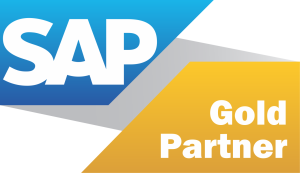Strategies For Successful SaaS Implementation

Introduction
Software as a service (SaaS) relieves businesses from building servers, installing applications, and configuring them. As a result, it is quickly gaining ground as an effective alternative to on-premise infrastructure. According to Gartner, global public cloud end-user spending is expected to grow to 18% in 2021 with SaaS being the largest market segment forecast to grow to $117.7 billion in 2021.
Homegrown products and on-premises systems are no longer able to meet the current digital trends and keep up with the business and technology demands. Enterprises are looking to reduce CapEx (Capital Expenditure) on IT infrastructure while becoming more agile and responsive.
This has opened ways to build SaaS products that benefit customers with quick deployment of solutions without the need for additional software and hardware. Security, scalability, add-on features every quarter, zero maintenance of IT and upgrades are some of the remarkable benefits of the SaaS products.
Challenges faced when Implementing a SaaS Product
●Following are some of the broad challenges that you might get while implementing SaaS products.
1. More time get consumed in finalizing the core processes in line with product functionalities
2. Quality of data received for data loading is not as expected
3. Implementation team experience some resistance in implementing new product
4. Integrations with other third parties consume more time than cloud product configurations
5. Product adoption rate will be poor without Change management
Strategies for a Successful Project Implementation
- While challenges are inevitable during any SaaS implementation, having a robust project framework will help overcome the restraints. Here are some of the key strategies for a successful SaaS implementation.

● Streamline Business Processes
Streamlining business processes within the core team is an essential prerequisite even before customers choose a SaaS product. This helps the teams involved in the project to successfully implement the solution quickly without much deliberation during workshops.

● Adopting Best Practices:
Customers need to adopt a cloud-first approach to maximize the efficacy of a SaaS product. This may need some policy changes so that the solution can be readily adopted without any customizations.

● Zero Customization
Having fewer or no customization reduces the dependence on maintenance after implementation. While it might not be possible to readily offer turnkey solutions, approaching SaaS implementation with a zero-customization mindset will greatly reduce the need for tailoring the product.

● Single Point of Contact for Each Module
| It is advisable to have a SPOC for each module during a big bang project implementation when several modules go live at the same time. This brings quality, accountability, and quick turnaround during project implementation. |

● Data Migration
The success of any project is invariably attributed to the quality of data. It is desirable to have a separate data extraction team at the client end right from the beginning of the project so that the team has ample time to extract and validate the data. Loading 10% of the data during the User Acceptance Test (UAT) is recommended as it allows to mimic the quality system before loading it to the production system. Additionally, this data can be validated by product owners during the UAT phase.

● Working as a Single Team
Teams involved in the project (including client and partner teams) need to synergistically work with a common objective to make the project successful. This avoids blame-game and increases accountability to meet internal milestones.

● Monthly Steering Committee Meetings
Monthly steering committee meetings need to be scheduled for every month on a specific day. This helps the stakeholders to have visibility in the project and enables the project team to focus on timelines laid out in the plan. Through these meetings, risks involved in the project can be highlighted and mitigation can be planned with a collective decision.

● Change Management
Effective change management supports a smooth transition from legacy to new systems while upholding morale & productivity. This improves cooperation, collaboration, and communication in the organization. An efficient change management process creates the correct perception of the change for employees and vendors.

● Involvement of IT & Security team
It is essential that the Project Manager includes IT and security managers right from the inception of the project so that they can specify and implement company policies. Password policy, encryption and decryption of files, and integration between third parties need the involvement of IT and Security teams to make the project successful holistically.

● Post-go-live Support Strategy
IT managers need to have a strategy for post-go-live support well beforehand. This helps to bring together the relevant teams from the client end right from the start of the project so that they have sufficient knowledge to drive support post-go-live. Delay in the decision may impact adoption rate post-go-live if employees’ queries are unanswered with SLA’s.
In a Nutshell

Most of the companies are implementing best of the breed SAAS products to leverage the benefits offered by them. Implementation and strategy to improve adoption of the product after go-live play key role in project success.Hence a thorough planning and execution with above mentioned recommendations will help project to close on time and will justify the cost invested on the business transformation. Also, with a Robust support model ( L1,L2 & L3 ) the adoption rate improve because of quick response from support teams and system gets stable in shorter duration.


























































































































































